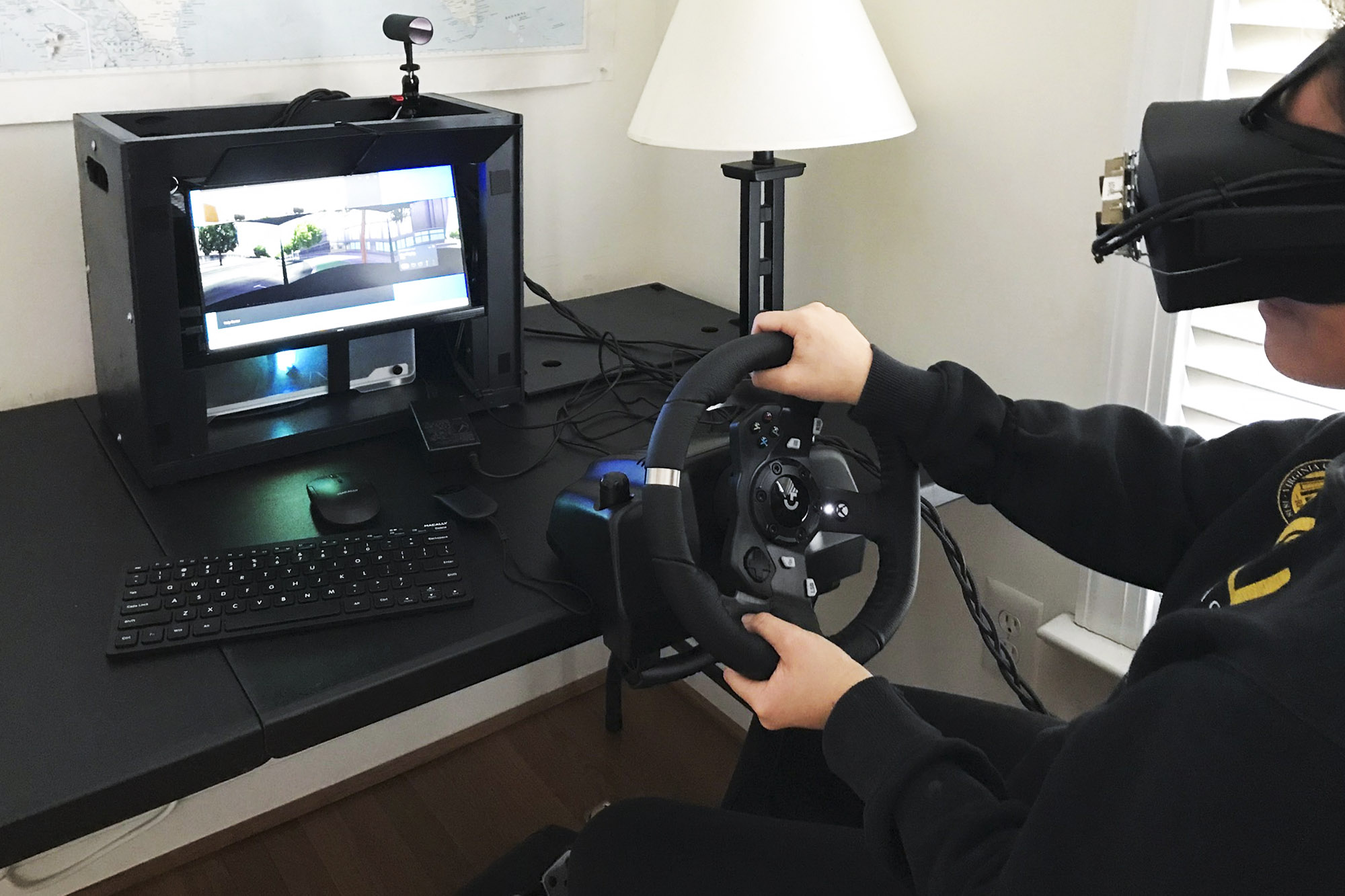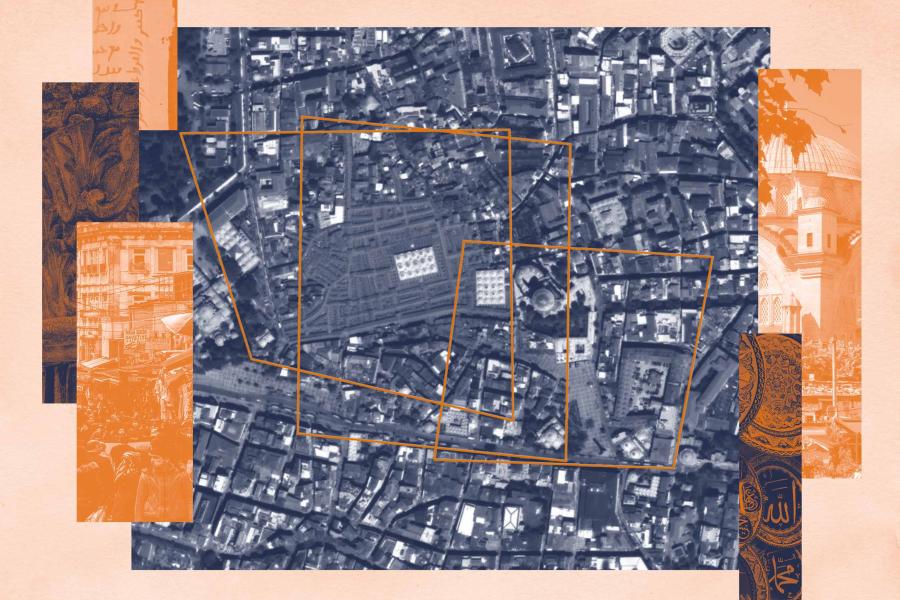“Our simulator is too big, too costly and too sophisticated and complicated to be exported extensively. So now we’ve come up with what they call a ‘mixed-reality, head-mounted display simulator,’” Cox said. “It takes the same road course that we’ve developed … and displays that. But what we’ve done is mount two cameras on the goggles that film the driver’s hands on the steering wheel. It mixes reality with the virtual world, so you can see your hands and feet in this immersive world. It’s like using our simulator, without the need for the simulator.”
High-Tech Driving Simulation
Cox’s full-sized simulator at the Driving Safety Laboratory mimics the cabin of a car. It features a seat and a steering wheel and pedals and all the controls needed to drive. These are surrounded by large screens that provide a panoramic view as the user travels through a virtual city, navigating traffic and changing road conditions. The experience is very immersive, and unexpected events can be unnerving even for those experienced behind the wheel.
The simulator allows novice drivers to become accustomed to both the familiar and unpredictable aspects of driving. It can also help families assess how the driver will fare on the open road. Many people with autism can become safe drivers with the proper training, Cox said, noting that the lack of a driver’s license can be a major barrier for finding employment and independent living.
To expand the reach of the simulator, Cox is testing the new, portable incarnation. If successful, the mixed-reality versions could offer many benefits: They can be purchased far less expensively than a full driving simulator, for example, and don’t require a trained technician to operate. Users might also be able to spend more time training with them in their own homes.
To gauge the usefulness of the approach, Cox and Dr. Einar T. Ingvarsson at the Virginia Institute of Autism are enrolling novice drivers – both those who are neurotypical and those with autism-spectrum disorders – in a clinical trial through the end of the year. Participants will use and rate the mixed-reality headsets and then compare them with their experiences with the room-size simulator. The researchers will also compare the performance of the neurotypical and ASD drivers on the two formats.
For More Information
To learn more about the clinical trial, call 434-924-5913. The work is being supported by a $60,000 grant from UVA’s Supporting Transformative Autism Research program.
Cox says the trial will offer important insights that will benefit the effort to help more people with ASD learn to drive safely, as well as other novice drivers.
“This is a very exciting possibility, bringing a high-tech approach to aid driving skills, comfort and safety to all sorts of novice drivers in a convenient and cost-effective manner,” Cox said.
To keep up with the latest medical research news from UVA, subscribe to the Making of Medicine blog.











